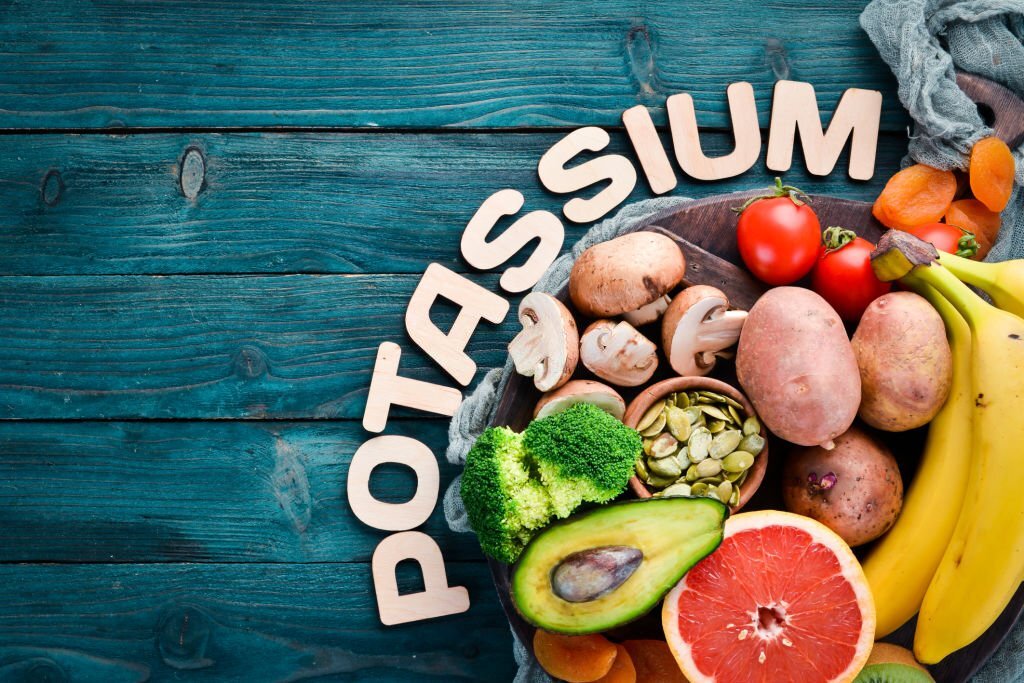High blood sugar and high blood pressure, more commonly known as diabetes, can trigger a variety of different health problems. One of the most dangerous and frightening ones is called diabetic ketoacidosis, which often occurs when your body does not have enough insulin or is unable to use it properly. This causes your body to break down fat for energy instead of sugar.
As a result, your body releases excessive amounts of acid called ketones, leading to extremely high blood acidity levels. If left untreated, this condition can lead to dehydration, electrolyte imbalance, coma, and death.
Fortunately, there are certain foods that can help you prevent this condition by reducing your risk of low potassium levels as well as other side effects of diabetes.
What is Potassium, and Why is it Important?
Potassium is an essential mineral that your body needs in order to maintain normal blood pressure levels, keep your muscles and nerves working properly and even aid in the digestion of certain foods.
Potassium can be found in a variety of different foods, such as bananas, avocados, potatoes, leafy greens, tomatoes, seeds, and legumes. However, potassium is naturally found in many foods and can be easily depleted when your body needs it most.
This is why those with diabetes are at a higher risk of developing low levels of potassium and the dangerous side effects that come with it. The most common signs of low potassium levels are muscle spasms, weakness, fatigue, irritability, and a faster heartbeat.
If left untreated, your body may not be able to regulate its blood pressure levels properly, leading to an increased risk of heart attack, stroke, and kidney damage.
What Causes Potassium Levels to Fluctuate?
Certain foods are rich in potassium and may help to prevent your potassium levels from falling too low. But other foods high in potassium can actually cause your levels to fall, particularly if you have diabetes.
The following factors can increase the risk of low potassium levels:
- If you have diabetes, you may need to plan your diet to avoid low potassium levels carefully. If you have type 2 diabetes, the sooner you self-diagnose and begin to take action, the better your chances of preventing complications.
- Certain medications can also trigger low potassium levels, including steroids, chemotherapy drugs, non-steroidal anti-inflammatory drugs (NSAIDs), diabetes drugs, and antibiotics.
Foods that Help Maintain Your Body’s Potassium Levels
Foods rich in potassium can help to prevent your potassium levels from falling too low. These include:
1. Bananas
Bananas are a good source of potassium and are a staple of many diabetic diets. They are also an excellent source of dietary fiber and Vitamin B6, which is important for maintaining normal blood sugar levels.
2. Potatoes
While potatoes are often blamed for increasing blood sugar, they are actually good for those with diabetes. Potatoes are rich in dietary fiber and Vitamin C and are a source of potassium. They are also easy to prepare and make a great side dish for any meal.
3 Avocados
Avocados are not only delicious but also a great source of essential fats and potassium, making them perfect for a diabetic diet. They also contain high levels of Vitamin E, which is important for regulating blood sugar and protecting your body from oxidative stress.
4. Beans
Beans are rich in minerals and vitamins and a great source of fiber. They are also a good source of potassium and can be added to a variety of dishes.
5. Broccoli
Broccoli is a superfood that is rich in vitamins, minerals, and fiber. It is also a great source of potassium and many other essential nutrients.
6. Spinach
Spinach is packed with essential vitamins and minerals. It is a good source of potassium and contains many other helpful nutrients.
Foods to Avoid When You Have Low Potassium Levels
In addition to eating foods rich in potassium, you also need to avoid foods that can lower your potassium levels.
1. Coffee
Coffee is a known diuretic, which means that it encourages your body to expel water. The more water you lose, the higher your risk of developing low potassium levels. While black coffee is the worst, even a small amount can have a significant impact on your body.
2. Tea
While tea is often praised for its beneficial properties, it is actually rich in caffeine and can cause the same problems as coffee.
3. Alcohol
Although alcohol is often considered healthy, it should be avoided when you have low potassium levels. Beer and wine are rich in potassium, but the excess sugar can cause a spike in blood sugar levels and further deplete your body of the mineral.
4. Spicy foods
Spicy foods and peppers contain capsaicin, a substance that can cause your body to expel more water and become dehydrated.
5. Processed foods
Many processed foods are high in sodium, which can lead to an increase in blood pressure and loss of potassium.
6. High Sugar foods
Sugary foods are an important part of a healthy diet, but they can have a negative effect on your potassium levels if eaten in excess.
Conclusion
In order to prevent diabetic ketoacidosis, you must keep your blood sugar levels under control. One way to do this is by keeping your potassium levels up.
While this can be challenging, certain foods can help maintain your body’s potassium levels and keep your blood sugar in check.
Be sure to avoid the seven foods to avoid when you have low potassium levels and choose the six foods that are rich in potassium to ensure you are at a reduced risk of developing diabetic ketoacidosis.

